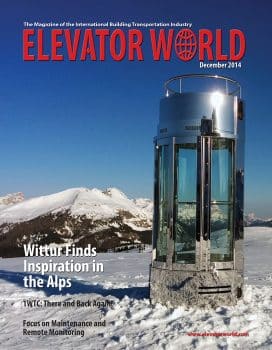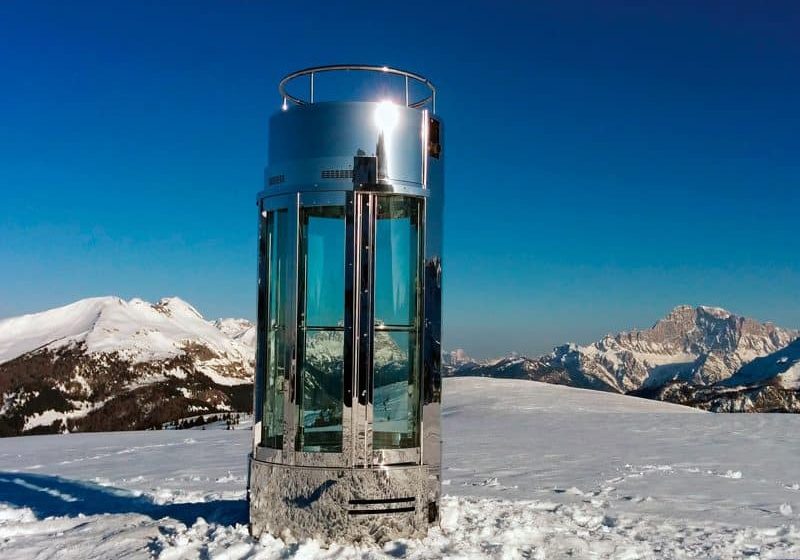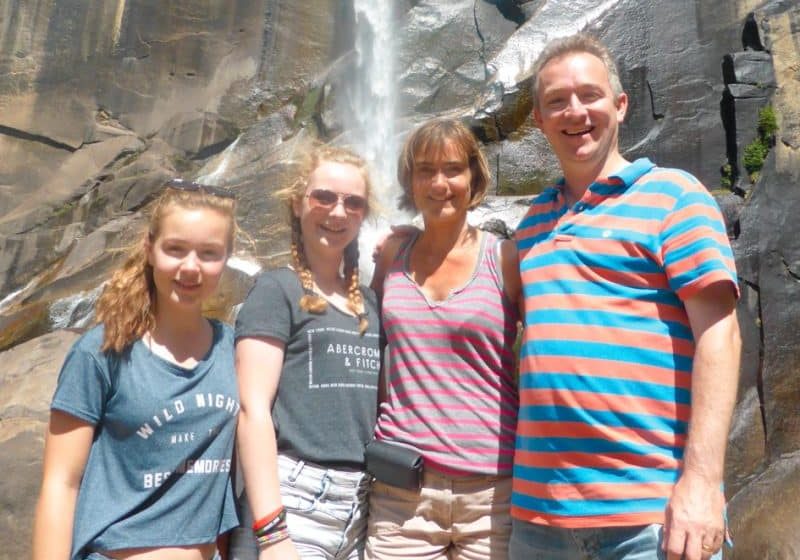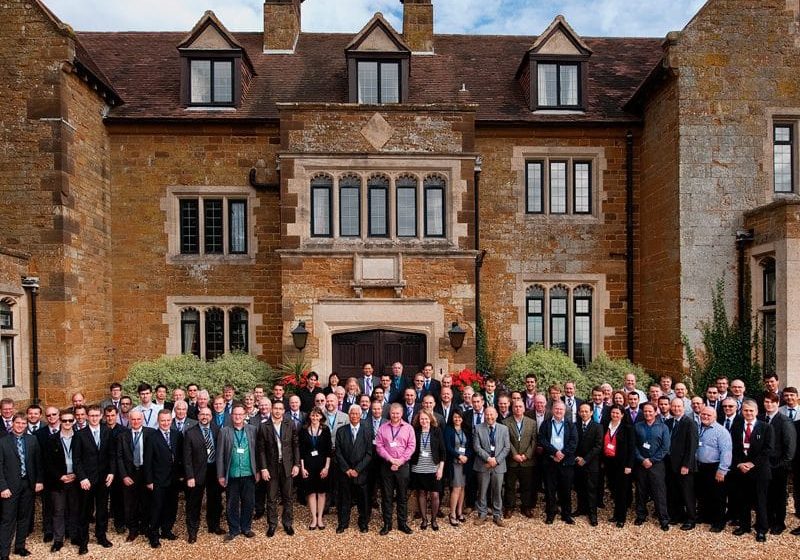Six methods are used to evaluate round-trip time (RTT), using numerical analytics and simulation.
by Lutfi Al-Sharif, Ahmad M. Abu Alqumsan and Ahmad T. Hammoudeh
The evaluation of the elevator round-trip time (RTT) has been, and still is, fundamental to the design of elevator systems. Historically, RTT has been evaluated using analytical methods based on equations. The equations are derived using the expected value of critical parameters that constitute RTT. Recently, numerical and modern analytical methods have been introduced for evaluating RTT, such as the Monte Carlo simulation method and Markov Chains, among others.
This article lists and discusses six different analytical, numerical and simulation methods used in evaluating RTT. It also compares the six methods, highlighting the advantages and disadvantages of each method and areas of application. The role of RTT in elevator traffic-system design is outlined, and equation-based methods are discussed. Numerical methods covered include Monte Carlo, exhaustively enumerated weighted average (EEWA), the Markov Chain Monte Carlo (MCMC) method and direct Markov Chain method. Simulation-based methods are widely used and discussed, and finally, conclusions are drawn.
RTT and Elevator Traffic System Design
There are two general directions for designing elevator traffic systems: calculation and simulation.[1 & 2] RTT is fundamental to the calculation approach. Once RTT has been evaluated, it is divided by the target interval to find the required number of elevators in the group. Graphical methods can be used to show the optimality (or otherwise) of a certain design.[3] The values of the average traveling time can be used as a guide to subdivide into zones.[4] The derivation of RTT relies heavily on kinematic parameters. Idealized elevator kinematics[5] are usually used in deriving several RTT parts and are very relevant to some of the following numerical methods discussed.
Equation-Based Methods
Equation-based methods are the most widely used type. They are used for the most simple of cases, where the floor heights are equal, the floor populations are equal, a single entrance is present and the top speed is attained in one floor journey for incoming traffic.[6 &7] As these conditions become more complicated, the equations are further developed, and their complexity increases.[8-11] Equations have also been derived for the average traveling time[12] and to deal with different up-peak group-control algorithms.[13 & 14]
Monte Carlo Simulation
Monte Carlo simulation is a powerful method for evaluating RTT numerically and has been applied in elevator traffic engineering in two areas.[15 & 16] It has been applied to evaluating the value of RTT,[17] as well as average traveling time.[18]
The classical RTT formula assumes a number of special conditions to simplify the derivation of the formulae (e.g., equal floor heights, single entrance and top speed attained in one floor journey). The Monte Carlo simulation method proves very useful in cases where all the special conditions are not met. Reasons for using it (as opposed to the analytical method) are:
- Analytical equations do not exist for the combinations of the special conditions, whereas the Monte Carlo method can deal with any combination.
- It already covers all the special conditions and does not need any modification if any new special conditions are introduced. Analytical methods will require modification for any new special condition.
- It can be easily developed to cover the case of different types of traffic, as well as various control algorithms. In some cases, the development of analytical equations requires radical restructuring of the equations or even starting from scratch.
- It can be used as an alternative to simulation to provide deterministic answers to some problems in vertical transportation, such as the question of zoning medium- and high-rise buildings.
The fact that the Monte Carlo method is a simulation method that provides an answer with some uncertainty need not be a drawback. The accuracy of the Monte Carlo simulation can be determined by the user by increasing the number of runs (e.g., from 10,000 to 100,000). This is discussed in detail in the paper on finding the average traveling time using the Monte Carlo method.[18]
The EEWA Method
Another method that can be used to evaluate RTT is the EEWA method. In it, all the possible permutations of passenger destination selections are enumerated until they are exhausted. For each possible passenger destination permutation, the corresponding RTT and the probability of that permutation taking place are calculated. Then, the weighted average of all the round trips is found by multiplying each round trip by the probability of it taking place.
Let NB be the number of entrances, N be the number of occupant floors and P be the number of passengers boarding the elevator car from the entrances. Then, the number of possible scenarios can be calculated as follows:

As an example, a building with a ground floor, two basement car parks and eight floors above ground (where passengers can enter the building from any of three basement car parks) and five passengers boarding the elevator car in each round trip has the following number of scenarios:

For each scenario, it is necessary to find the probability of that scenario taking place and the resultant RTT when that scenario happens, as shown by Equation 3:

Equation 3 shows that the probability of a certain scenario taking place is calculated by multiplying the percentage populations of all the destination floors for the (first to Pth passengers). Ui is the population of the ith floor, and U is the total building population. The following example illustrates the method.
Example 1
This example is extremely simplified in order to allow for the carrying out of manual calculations. A building has a single entrance and five floors above ground. It has equal floor heights and equal floor populations. The car is boarded by only two passengers in each round trip. Other parameters are:
- Rated speed: 1.6 mps
- Door opening time: 2 s.
- Door closing time: 3 s.
- Passenger transfer time: 1.2 s.
- Rated acceleration: 1 mps2
- Rated jerk: 1 mps3
- Floor-to-floor height: 4.5 m
All 25 (52) possible scenarios are enumerated in Table 1. The destinations of the two passengers are shown in the second and third columns. As the floor populations are all equal, the probability (Pr) of a passenger heading for a floor is 0.2. So, the probability of each scenario is 0.04 (i.e., 0.22), which is shown in the fourth column. RTT for each scenario is shown in the fifth column. A weighted average of all the round trips is evaluated by multiplying the round trip for each scenario by the probability of the scenario taking place. (The product for each scenario is shown in the sixth column.) Adding all the products gives the weighted average, which is the value of RTT (47.455 s.). Comparing this to the value obtained by the analytical equation gives exactly the same value, which is expected.
Example 2
A more realistic building is examined in this example, without showing all the details. As the building is more complicated than the one in the previous example, a MATLAB code is used to run all the possible scenarios. The building has two entrances with 10 floors above them. It has equal floor heights and equal floor populations. The car is boarded by six passengers in each round trip. Other parameters are:
- Rated speed: 1.6 mps
- Door opening time: 2 s.
- Door closing time: 3 s.
- Passenger transfer time: 1.2 s.
- Rated acceleration: 1 mps2
- Rated jerk: 1 mps3
- Floor-to-floor height: 4.5 m
The number of possible scenarios in this case is extremely large: (2 · 10)6, or 64 million scenarios. It is run on the MATLAB software and gives an RTT value of 121.2566 s., exactly the same value as that obtained by the equations (121.2566 s.). It was also solved by using the Monte Carlo method. The error in the result between the Monte Carlo simulation and this one was plotted logarithmically against the number of trials in the Monte Carlo simulation (Figure 1). The x-axis units are the number of trials in the Monte Carlo method, divided by the total number of possible scenarios.
It can be seen from Figure 1 that if an error of 0.01% or less is desired, the number of iterations needs to be in the range of 1/100 of the total possible number of scenarios. It is not suggested that the EEWA method be used to evaluate RTT. It has been introduced in this section to be used as a guide to the suggested number of trials to be carried out in a Monte Carlo simulation to attain the required level of accuracy.
The MCMC Method
The movement of the elevator around the building is, in effect, a series of transitions between states (where the presence of the elevator at a floor is considered to represent a state). The probability of such a transition from one floor to another can be modeled as a Markov Chain.
The MCMC method is used to evaluate RTT, first by calculating the transition probability matrix (TPM). The elevator is then moved between the various floors using the TPM for a high number of transitions. At the end of the run, RTT is evaluated by finding the average value of RTT by examining the elevator reversals (Figure 2).
The MCMC method has been well detailed for both single-[19] and multiple-entrance[20] buildings for the case of incoming traffic. Here is an overview of the steps taken to evaluate RTT using the MCMC method:
- Develop the kinematics matrix.
- Develop the transition probability matrix.
- Extract the probability density function (PDF) for each floor of the building from the corresponding row in the transition probability matrix.
- Convert each PDF obtained in step 3 into a cumulative distribution function (CDF).
- Assuming that the starting position for the elevator is the entrance floor with the highest arrival percentage, Prarr(i), draw a random sample from the CDF produced from the row corresponding to that entrance in the transition probability matrix. This will produce the next destination of the elevator.
- Using the row that corresponds to the current position, use the CDF of that row to generate the next destination.
- Repeat step 6 until the elevator makes a downward journey to one of the entrance floors.
- Repeat steps 6 and 7, counting the number of reversals. The number of total reversals corresponds to the required number of trials, n.
- Using the kinematics matrix developed in step 1, calculate the traveling-time component of all of the n round trips generated in step 8.
- Add all the stops that took place in all the above trials and add a door cycle time for each stop.
- Based on the number of passengers upon which the transition probability matrix was developed, calculate the passenger transition component of the round trip by multiplying the number of passengers by both the sum of the passenger boarding and alighting time and number of trials.
- Add all the times from above; this provides a value for the total time shown in Figure 2.
- Divide the total time obtained in step 12 by the total number of reversals (the total number of round trips). This produces the value of RTT (Figure 2).
Markov Chain Direct Method
The direct Markov Chain method also depends on modeling the elevator movements between floors as a Markov Chain. In order to calculate RTT from the Markov Chain transition probability matrix, three components need to be evaluated:
- TK is the kinematic part of the round trip, which is the time spent by the elevator as it is moving. It is possible to use the values in the matrix to find the probability of a journey taking place between any two floors in a round trip. The probability of each journey is found by dividing each row of the TPM by the probability of stopping at the floor representing that row. The time for each journey is found by using the kinematics equations from “Ideal Lift Kinematics.”[5] The final value of the kinematic part is then the weighted average of all the possible journeys, found by multiplying the probability of each journey by the time it takes.
- TD is the door part of the round trip, during which the doors are opening and closing. By finding the steady-state probabilities of the TPM, it is possible to find the total number of stops in a round trip. The total number of stops is comprised of two types of stops: the expected number of stops in the occupant floors (S) and the expected number of stops in the entrance floors (R).
- TP: The passenger part of the round trip during which passengers board and alight from the elevator car. This part is very easy to calculate simply by multiplying the number of passengers (P) by the sum of the boarding and alighting passenger times (tpi + tpo).
The final value of RTT is the sum of the three components above. Full details of the method can be found in “Evaluating the Elevator Round Trip Time for Multiple Entrances and Incoming Traffic Conditions Using Markov Chain Monte Carlo.”[21]
Simulation-Based Method
Simulation is usually used as a design tool to assess an elevator traffic design.[22-27] It is rarely used to evaluate the value of RTT. However, it is possible to use simulation packages to find this value. A number of studies have attempted to reconcile the results of calculation and simulation.[28-30] The main advantage of using simulation to evaluate RTT is that it is more reflective of real conditions. For example, simulation can easily show effects of the following:
- Random passenger arrivals (i.e., under a Poisson passenger-arrival model)
- The effect of random lengths of RTT caused by different passenger destinations: the fact that RTT is a random variable has been discussed in detail in “Variability in Round-Trip Times for an Elevator Car During Up-Peak.”[31] This variability in the value of RTT has a significant effect on the final value of RTT, as positive deviations (i.e., increases) are not necessarily canceled out by the negative deviations (i.e., decreases).
- The effect of different group-control algorithms on the value of RTT
- The effect of bunching of elevators in the same group and their effect on the variability of the interval and the accumulation of passengers at the main entrance
Judgment is required in the process of extracting the value of RTT from the final simulation. It is usually necessary to remove the fringe round trips (for example, the first and last round trips), as they are not representative of the actual RTT.
Conclusions
The design of elevator traffic systems relies heavily on the evaluation of RTT. RTT can be evaluated using any of six methods. These methods can be classified as analytical-/equation-based methods, numerical methods and simulation-based methods.
Analytical methods of calculating RTT are based on analyzing the components of RTT and deriving an equation that directly provides the value of RTT. So, a lot of effort is expended in deriving the equation that is valid for certain conditions. When these conditions are true, the equation can then be used. However, it needs to be amended when the conditions change.
Numerical methods can only be evaluated using software due to the large number of iterations required. Monte Carlo simulation is a very practical way of evaluating RTT by randomly generating a large number of scenarios, then taking the average value of RTT that results from each scenario. The number of trials usually required is in the range of 100,000 to one million. EEWA can be considered a “brute force” method that can be used to enumerate all the possible round trips, then find the probability of such a round trip. A weighted average is then applied to find the RTT value. Markov Chains can also be used to model the elevator movements during a round trip. This leads to the TPM as a model of the elevator movements. It is then used in an MCMC simulation to find the value of RTT after many iterations. Alternatively, the TPM can be analyzed to find the kinematic component of the round trip and the expected number of stops and, thus, RTT.
Simulation-based methods extract the average RTT value from the simulation run. They offer the advantage of better reflecting reality. Specifically, simulation-based methods can show the effect of the passenger arrival model, the effect of the randomness of the value of RTT and the group-control algorithm on the value of the round time. Finding such effects using analytical techniques is extremely complicated.
Acknowledgement
This article was also presented at Elevcon 2014, held in Paris on July 8-10. It can be found on pages 62-73 of Elevator Technology 20, Proceedings of Elevcon 2014, published by the International Association of Elevator Engineers.
References
[1] Lutfi Al-Sharif and Mohamed D. Al-Adhem, “The Current Practice of Lift Traffic Design Using Calculation and Simulation,” Building Services Engineering Research and Technology, July 2014 Volume 35, issue 4, p. 438-445, published online before print, 26 September 2013 as doi:10.1177/0143624413504422.
[2] Lutfi Al-Sharif and Mohamed D. Al-Adhem, “Overview and Comparison of the Four Methods of Elevator Traffic Analysis and Design”, Elevator World, Virtual Elevator Event 2012, 11 July 2012.
[3] Lutfi Al-Sharif, Ahmad M. Abu Alqumsan and Osama F. Abdel Aal, “Automated Optimal Design Methodology of Elevator Systems Using Rules and Graphical Methods (the HARint plane)”, BUILDING SERV ENG RES TECHNOL, August 2013 vol. 34 no. 3, p. 275-293, doi: 10.1177/0143624412441615.
[4] Lutfi Al-Sharif, Christopher Seeley, “The Effect of the Building Population and the Number of Floors on the Vertical Transportation Design of Low and Medium Rise Buildings,” BUILDING SERV ENG RES TECHNOL, vol. 31, no. 3, 2010, p. 207–220.
[5] Richard D. Peters, “Ideal Lift Kinematics,” Elevator Technology 6, IAEE Publications, 1995.
[6] Chartered Institute of Building Services Engineers (CIBSE), CIBSE Guide D: Transportation Systems in Buildings, Fourth Edition, 2010, p. 4-2, section 4.3.2.
[7] G.C. Barney, Elevator Traffic Handbook: Theory and Practice, Spon Press/Taylor & Francis, London and New York, ISBN 0-415-27476-1, 2003.
[8] Lutfi Al-Sharif, “The Effect of Multiple Entrances on the Elevator Round Trip Time under Up-Peak Traffic,” Mathematical and Computer Modelling, Vol. 52, Issues 3-4, August 2010, p. 545-555.
[9] Lutfi Al-Sharif, Ahmad M. Abu Alqumsan and Rasha Khaleel, “Derivation of a Universal Elevator Round Trip Time Formula under Incoming Traffic,” BUILDING SERV ENG RES TECHNOL, March 2014 Vol. 35 No. 2 p. 198-213, doi:10.1177/0143624413481685.
[10] N.R. Roschier, M.J., Kaakinen, “New Formulae for Elevator Round Trip Time Calculations,” EW supplement, 1978.
[11] Richard D. Peters, “Lift Traffic Analysis: Formulae for the General Case,” Building Services Engineering Research & Technology, Vol. 11, No. 2, 1990, p. 65-67.
[12] A.T.P. So and W.S.M. Suen, “New Formula for Estimating Average Travel Time,” Elevatori, Vol. 31, No. 4, 2002, p. 66-70.
[13] G.C. Barney, “Uppeak Revisited,” Elevator Technology 4, Proceedings of Elevcon ’92, Amsterdam, The Netherlands, published by the International Association of Elevator Engineers, p. 39-47.
[14] G.C. Barney, “Uppeak, Down Peak and Interfloor Performance Revisited,” Elevator Technology 9, Proceedings of Elevcon ’98, Zurich, Switzerland, published by the International Association of Elevator Engineers, p. 31-40.
[15] Bruce A. Powell, “The Role of Computer Simulation in the Development of a New Elevator Product,” Proceedings of the 1984 Winter Simulation Conference, p. 445-450, 1984.
[16] C. M. Tam, Albert P. C. Chan, “Determining Free Elevator Parking Policy Using Monte Carlo Simulation,” International Journal of Elevator Engineering, Vol. 1, 1996.
[17] Lutfi Al-Sharif, Hussam Dahyat and Laith Al-Kurdi, “The Use of Monte Carlo Simulation in the Calculation of the Elevator Round Trip Time Under Up-Peak Conditions,” Building Services Engineering Research and Technology, Vol. 33, Issue 3 (2012) p. 319–338, doi:10.1177/0143624411414837.
[18] Lutfi Al-Sharif, Osama F. Abdel Aal and Ahmad M. Abu Alqumsan, “Evaluating the Elevator Passenger Average Travelling Time under Incoming Traffic Conditions using Analytical Formulae and the Monte Carlo Method,” ELEVATOR WORLD, June 2013, p. 110-123.
[19] Lutfi Al-Sharif, Hasan Shaban Algzawi and Ahmad Tayseer Hammodeh, “The Use of the Markov Chain Monte Carlo Method in Deriving the Elevator Round Trip Time under Incoming Traffic Conditions and a Single Entrance,” AMO – Advanced Modeling and Optimization, Vol. 15, No. 3, 2013, p. 689-695.
[20] Lutfi Al-Sharif and Ahmad Hammoudeh, “Evaluating the Elevator Round Trip Time for Multiple Entrances and Incoming Traffic Conditions Using Markov Chain Monte Carlo,” International Journal of Industrial and Systems Engineering (IJISE), Inderscience Publishers, 2014 Vol.18, No.1, p. 51-64, DOI: 10.1504/IJISE.2014.064340.
[21] Haneen Raid Abu Al-Hayja’a and Maisa’a Omar Younes, “The Direct use of Markov Chains to Evaluate the Elevator Round Trip Time under Incoming Traffic and Multiple Entrances,” Supervisor: Lutfi Al-Sharif, Final Year Project, Mechatronics Engineering Department, The University of Jordan, 2012/2013.
[22] Hans Jappsen and Olaf Rieke, “Difficulties in Comparing the Results of Lift-Traffic Simulations,” Elevator Technology 19, Proceedings of Elevcon 2012, 22-24 May 2012, Miami Beach, USA.
[23] Henri Hakonen and Marja-Liisa Siikonen, “Elevator Traffic Simulation Procedure,” Elevator Technology 17, Proceedings of Elevcon 2008, Thessaloniki, Greece, p. 131-141.
[24] Lukas Finschi, “State-of-the-Art Traffic Analyses,” Elevator Technology 18, Proceedings of Elevcon 2010, Lucerne, Switzerland, p. 106-115.
[25] Marja-Liisa Siikonen, Tuomas Susi and Henri Hakonen “Passenger Traffic Flow Simulation in Tall Buildings,” IFHS, International Conference on Multi-Purpose High-Rise Towers and Tall Buildings, November 2000.
[26] Mohamed Diaeddin Al-Adem, “Discrete Event Simulation of Multi-Car Elevator Systems,” Final Year Graduation Project, Supervisor: Lutfi Al-Sharif, Mechatronics Engineering Department, University of Jordan, Amman, Jordan, May 2012.
[27] Peters Research, “ELEVATE: Elevator Traffic Analysis & Simulation Software, Getting Started, Version 8,” November 2010.
[28] Richard Peters, “The Application of Simulation to Traffic Design and Dispatcher Testing,” Proceedings of the 3rd Symposium on Lift and Escalator Technologies, The University of Northampton, Northampton, U.K., p. 128-139.
[29] Marja-Liisa Siikonen “Elevator Traffic Simulation,” SIMULATION, Vol. 61, No. 4, 1993, p. 257-267, DOI: 10.1177/003754979306100409.
[30] Theresa Christy, “The Impact of Traffic Variations on Elevator Performance,” Elevator Technology 19, Proceedings of Elevcon 2012, 22-24 May 2012, Miami Beach, U.S.
[31] Donald P. Gaver and Bruce A. Powell, “Variability in Round-Trip Times for an Elevator Car During Up-Peak”, Transportation Science, May 1971, Vol. 5, No. 2, p. 169-179.
Get more of Elevator World. Sign up for our free e-newsletter.








